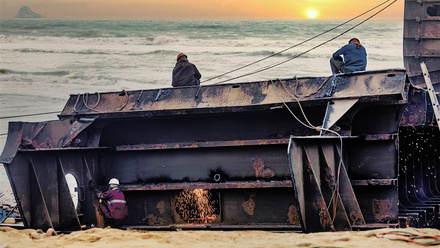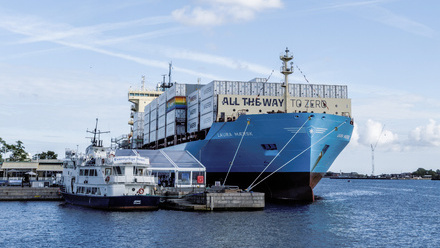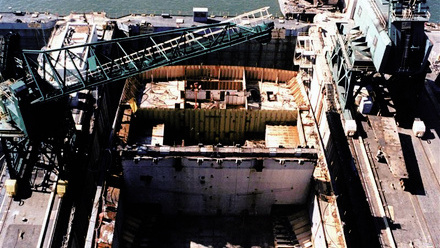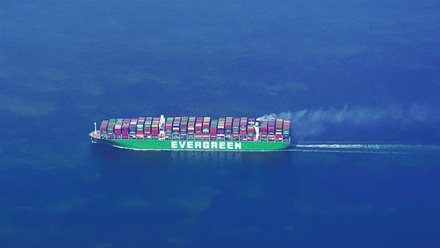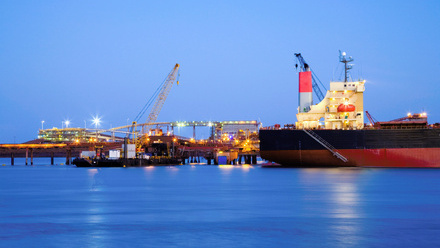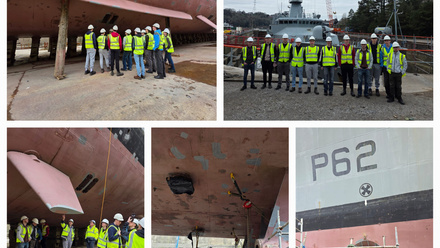Kongsberg’s chief ship designer: ‘We will see disruptive solutions’
As Kongsberg announce their 1,000th ship delivery, we explore how ship design has evolved and what the future holds.
Fifty years ago, as oil companies ventured into the North Sea and found the type of support vessels used in the shallow waters of the Gulf of Mexico unsuited to these challenging waters, a small shipyard on the west coast of Norway, Ulstein Trading, rose to the challenge.
Drawing on its knowhow working with North Sea fishing fleets, the company pioneered the first vessels designed specifically for the harsh operating conditions of the area.
In 1974, the UT 704 platform supply vessel entered operations, delivering the capabilities suited for this harsh environment and the UT Design range became the benchmark for the offshore industry.
Now the company that went on to become Kongsberg Maritime is preparing to deliver its 1,000th ship in a much-changed world.
The North Sea’s oil and gas reserves are in decline, but offshore wind has created a boom industry that requires its own specialist vessels. And the demands of net zero targets and emissions regulations, not to mention the acceleration of disruptive technologies such as digitalisation and automation, mean today’s ship designers must increasingly work to futureproof their designs for an uncertain and fast-changing world.
Although the company’s 1,000 strong portfolio is dominated by vessels serving the offshore industries, around 200 vessels operate in other markets. These include cargo ships and high-speed RoPax ferries (freight vehicle transport along with passenger accommodation), explorer cruise ships and an extensive range of vessels for the fisheries and aquaculture market.
Einar Vegsund, Director, Ship Design Solutions at Kongsberg Maritime, said the company’s philosophy is centred around three key pillars: safety, operational efficiency, and sustainability.
“Many of the ships operate in some of the harshest conditions on the planet, so there is always a laser-sharp focus on safety,” he says.
Operational efficiency is also key for shipowners, who are investing millions in long-life assets.
“Designing a ship is one thing, but understanding how they are operated is another,” says Vegsund. “With 1,000 ships designed so far, we can tap into a huge pool of operational experience and data, to continue evolving our designs.”
Sustainability considerations are no longer a ‘nice to have’ but are increasingly ‘licence to operate’ requirements that, if not met, come with regulatory, financial, and reputational consequences.
Emissions targets are also pushing the limits of design, whether it’s accommodating alternative fuels such as methanol and ammonia, battery-hybrid solutions, or innovative designs, such as wind-assist sails.
As part of a wider global technology group, Kongsberg Maritime can deliver integrated solutions, states Vegsund. “We work with customers to incorporate other technology in a way that can operate within our designs.”
Vegsund cites the example of nine chemical tankers ordered by Terntank. The design will integrate third-party produced wind-assist sails that will help deliver ships with an Energy Efficiency Design Index close to 40% below the International Maritime Organization’s 2025 Phase 3 requirements, as the industry works to meet enhanced rules on cutting GHG emissions.
Vegsund is hard pressed to name a favourite ship from Kongsberg’s vast portfolio but pointed to the Sir David Attenborough research vessel, which is now being operated by British Antarctic Survey (BAS) and was the company’s largest contract value for a single ship.
“It was a really demanding customer, and they wanted a partner that could take on a lot of responsibility for this extremely complex vessel,” he enthuses.
But, where will the next 50 years take ship design?
“We will see a lot more disruptive solutions,’ imagines Vegsund.
“There are going to be different levels of autonomy, including unmanned vessels, and then we need to accommodate the challenge of green fuels, because some are toxic, some are explosive, some take up more space, all of which will change design a lot too.”
Whatever lies ahead, Vegsund says it’s an exciting time to work in ship design as technology, commercial and environmental pressures converge to continuously push the art of the possible.
If you would like to join the Ship Repair, Maintenance, and Safety SIG, click here for more information.
Main image: Einar Vegsund, Director, Ship Design Solutions at Kongsberg Maritime; credit: Kongsberg

